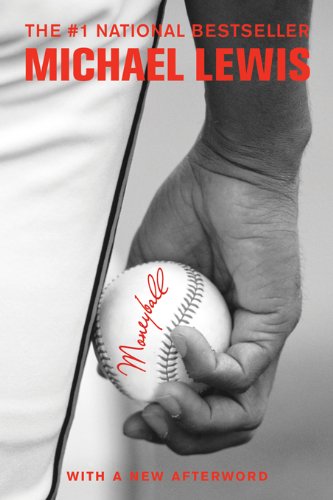

This article is an excerpt from the Shortform summary of "Moneyball" by Michael Lewis. Shortform has the world's best summaries of books you should be reading.
Like this article? Sign up for a free trial here .
What is the Moneyball strategy? How did the Moneyball strategy change baseball?
The Moneyball strategy is based on the idea that baseball can be narrowed down to data that supports profit. The Moneyball strategy, as detailed in the book Moneyball, argues that baseball is a business and teams can be successful with good investments.
The Moneyball Strategy: A New Approach to Baseball
Billy Beane enters the front office at a true inflection point for the Oakland A’s and for baseball as a whole. Much of what was thought to be sacrosanct about the game is being questioned. The traditional ideas about what makes a winning team are being challenged and proven wrong.
In 1995, as Billy is working his way up the ranks of the front office, the Oakland A’s are sold to real estate developers Steve Schott and Ken Hofmann. This signals a shift in how the entire organization will come to think about acquiring and managing players. The previous owner had been willing to spend as much as needed to field a competitive team, seeing ownership of a major league team as more of an act of civic duty than a profit-yielding investment. In fact, the 1991 A’s had the highest team payroll in all of baseball.
But the new owners adopt a very different approach. For them, owning the A’s is an investment—one that they expect to pay off. Their new mantra is to reduce costs as much as possible, and that means cutting team payroll to the bone. Gone are the days of free spending. The team must now economize, making sure that every dollar spent on players demonstrably contributes to on-field success. This leads to Billy adopting the Moneyball strategy.
The New Economics of Baseball
Oakland’s new austere, no-frills approach to running the team occurs during an era where the economics of professional baseball are undergoing profound change. The change is driven by a few key factors, all of which make smart drafting of amateur players essential for teams looking to rein in costs. The Moneyball strategy can help with cost, while also, in theory, producing wins.
- The first is the rise of free agency in baseball. After a court ruling in the 1970s, players are able, for the first time, to sell their services on the open market following the expiration of their entry-level contracts.
- The second is skyrocketing player salaries, a trend which begins following the introduction of free agency. In just the four years following that court ruling, the average league salary goes from $52,000 per year to $150,000. By 2002, the average player salary is $2 million+, and growing. With baseball players now earning such hefty compensation for their services, it becomes incumbent upon the front office to make sure that owners’ money is spent wisely.
For big-market teams like the New York Yankees and Boston Red Sox, these trends do little to change their approach to running a big-league club. Their deep-pocketed owners are willing and able to spend whatever they need to in order to acquire the biggest stars on the free agent market. But for relatively poor teams like the A’s, they change everything, placing a premium on finding value in the type of players in whom no one had seen value before.
Sandy Alderson: A New Philosophy
Sandy Alderson, general manager of the A’s when Billy Beane makes his transition to the front office, is considered a baseball outsider by many within the organization, mainly because he has never played baseball himself. But because he has never played, he is unbiased and unattached to baseball’s customary way of doing things and open to new approaches to the game.
He observes that most of the things baseball insiders love about the game and value most in players—particularly big, flashy plays like home runs and stolen bases—do little over the course of a season to help the team score runs and win games. Simply put, most of the things major league baseball teams do don’t actually work.
Because after all, the purpose of a baseball team isn’t to compile home runs or a high batting average: it’s to score runs and win games. Therefore, every player and every play ought to be judged solely on the basis of how it contributes to the win column. Alderson, now in charge of spending the team’s suddenly scarce funds, needs to ensure that every penny is spent wisely—and for him, the Moneyball strategy makes sense.
Alderson pioneers a scientific, data-driven, and top-down approach to managing a baseball team. He thinks little of the opinions and collective wisdom of the old baseball men and is dismissive of the yardsticks by which they measure performance.
Drawing Walks
To drill a bit further, there is a reason that batting average has such a weak correlation with runs—hits are not the only way that a batter can get on base. Batting average overlooks the importance of walks to a team’s total offensive output, and is it incredibly important in the Moneyball strategy, since it analyzes output.
The batting average statistics sharply undervalue a player’s ability to get on base by drawing walks. Players who are good at this aren’t flashy home run hitters, but they contribute heavily to runs scored and, most importantly for Alderson, are deeply undervalued (and underpriced) by most teams. Drawing walks is a subtle skill—it relies on the hitter knowing when not to swing, being patient, and studying a pitcher’s throwing tendencies.
This is at odds with the traditional view of walks, namely, that they are entirely produced by pitcher error, and that the batter has no agency in creating them. But Alderson rejects this passive view, arguing that a hitter plays a significant role in drawing walks. Traditional baseball’s free-swinging ethos, meanwhile, conditions players to look for an opportunity to belt one out of the park, rather than contributing to team offense through walks.
On-Base Percentage
Alderson sees that another statistic provides a much better prediction of offensive output: on-base percentage. This measure tells you how often a batter got on base, including by walks. Essentially, on-base percentage is the probability of a batter making an out. And this is the measure that Alderson seeks to spread like gospel through the Oakland organization.
There is a simple, strong logic to Alderson’s new philosophy. During a team’s hitting portion of an inning, anything is possible before they’ve made three outs; thus, the primary goal of the offense should be to avoid making outs. Any play which increases a team’s chances of making an out is bad; any play which decreases the chances of making an out is good. Therefore, increasing on-base percentage should be the primary focus.
Attempting to Change the Organizational Culture
All of this is a radical departure in thinking on Alderson’s part, one that sets him apart from the old baseball minds within his organization, including then-manager Tony La Russa. The latter believes that scoring is a product of a series of flashy plays by individual players; Alderson believes that scoring is a team-wide process. Every ball, every walk, every hit, every avoided out contributes incrementally to runs.
Alderson is evangelical in his emphasis on on-base percentage. While he sees some success in implementing his ideas in Oakland’s minor league affiliates, his philosophy hits a brick wall with the big club in Oakland, where traditional attitudes still prevail. Alderson’s revolution toward adopting the Moneyball strategy remains incomplete.
The Conversion of Billy Beane
Indeed, the very presence of Billy Beane on the roster, a player who liked to swing at every pitch, shows how little currency Alderson’s ideas have at this time. But Alderson is an important figure for Billy, one who shows him that it is possible to apply intellectual rigor and analysis to baseball. By the mid-1990s, Billy has risen through the ranks of the organization to become a talent scout. He is a supporter of Alderson’s approach and wants to apply these principles to his new position. He asks Alderson where he has gotten his ideas from, and Alderson directs him to the works of a writer named Bill James.
Reading James is a turning point for Billy. He goes from being merely a supporter of this new approach to baseball, to a true believer. For, by this point, James’s ideas are beginning to reshape how intelligent general managers and scouts look at the game.
The Moneyball strategy was not necessarily well-received when it was first implemented by Billy Beane. The strategy was seen as foolish and even offensive to those deeply involved in baseball and its culture. However, the Moneyball strategy permanently changed how teams managers see their baseball teams.

———End of Preview———
Like what you just read? Read the rest of the world's best summary of Michael Lewis's "Moneyball" at Shortform .
Here's what you'll find in our full Moneyball summary :
- How Billy Beane first flamed out as a baseball player before becoming a general manager
- The unconventional methods the Athletics used to recruit undervalued players
- How Sabermetrics influences American baseball today






